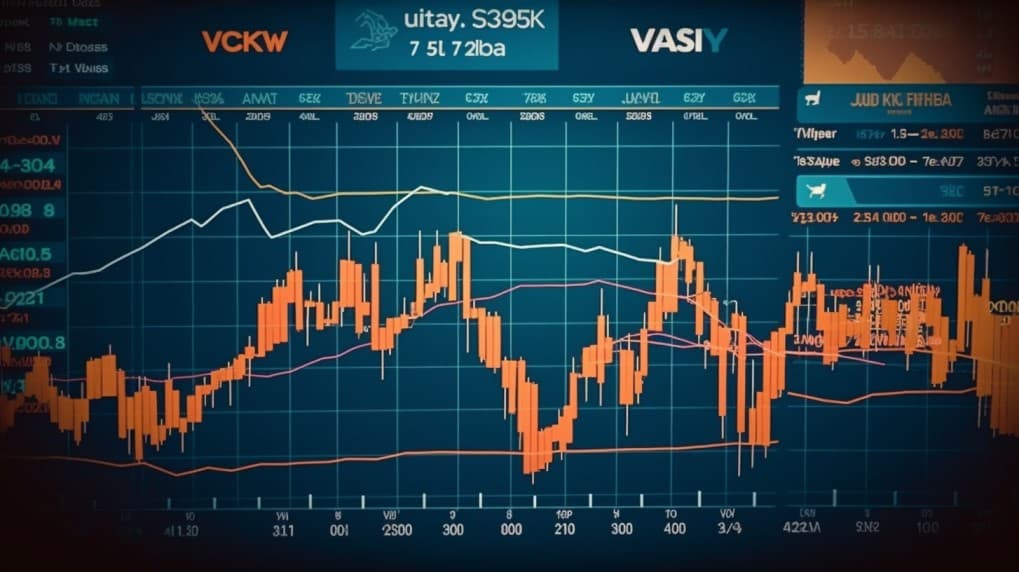
EFA & EEM: Sectors and Top Holdings
Exchange-Traded Funds (ETFs) have reshaped the landscape of modern investing, offering a convenient and diversified way to gain exposure to various sectors and asset classes. In this article, we will conduct an in-depth analysis of two prominent ETFs: EFA (iShares MSCI EAFE ETF) and EEM (iShares MSCI Emerging Markets ETF). We'll take a closer look at their ETF tickers, full names, issuers, sectors, top holdings, capitalization, investment strategy, tracking methods, and exposure.
EFA & EEM: Overview
EFA and EEM are two ETFs that cater to different geographical markets. EFA focuses on developed markets outside of North America, encompassing Europe, Asia, and Australia. On the other hand, EEM zooms in on emerging markets, which include countries with rapidly evolving economies and expanding industries. This geographic distinction shapes the risk and return profiles of these ETFs and is crucial for investors to comprehend.
EFA & EEM: Sectors and Top Holdings
When evaluating ETFs, understanding their sectors and top holdings is paramount. EFA predominantly invests in sectors like financials, healthcare, and consumer goods, reflecting the industries prevalent in developed economies. In contrast, EEM's sectors span technology, finance, and consumer discretionary, aligning with the growth-oriented nature of emerging markets. Notably, the top holdings of EFA include multinational giants like Nestlé and Samsung, while EEM boasts prominent names like Tencent and Alibaba.
 EFA overlap EFA VS EEM
EFA overlap EFA VS EEM
EFA & EEM: Capitalization and Investment Strategy
The disparity in the asset under management (AUM) between EFA and EEM is a reflection of their respective market focuses. EFA's larger AUM signifies its popularity among investors seeking stable exposure to established economies. EEM, with a smaller AUM, emphasizes the potential for growth and higher returns that come with investing in emerging markets. Their divergent investment strategies cater to varying investor preferences, with EFA seeking consistent performance and EEM targeting the allure of higher rewards.
EFA & EEM: Tracking Methods and Exposure
The tracking and exposure methodologies of EFA and EEM offer insight into their underlying assets. EFA strives to replicate the performance of the MSCI EAFE Index, which encompasses developed markets' equities. Meanwhile, EEM mirrors the MSCI Emerging Markets Index, comprised of stocks from emerging economies. These tracking approaches provide investors with an efficient means to mirror the market movements of their chosen regions, enabling exposure to specific economic dynamics and growth potential.
Conclusion
In the realm of ETF investing, EFA and EEM stand as distinct avenues for investors seeking international exposure. EFA presents a gateway to well-established economies with stable returns, while EEM unlocks the potential of emerging markets' growth. To gain a deeper understanding of these ETFs' holdings, correlations, overlaps, and other insights, ETF Insider emerges as the ultimate tool. With its user-friendly application, it equips investors with comprehensive information on these financial instruments and more.
Disclaimer: This article is intended for informational purposes only and does not offer any investment advisory services.
Sources:
EEM quote and analysis
Discover the top holdings, correlations, and overlaps of ETFs using our visualization tool.
Our app allows you to build and track your portfolio.
To learn more about the EEM iShares MSCI Emerging Markets ETF, access our dedicated page now.
FAQ
Why is EFA better than EEM?
EFA may be considered better than EEM for some investors due to its specific focus, offering diversification.
Does EEM beat EFA?
EEM's performance relative to EFA will vary over time, depending on market conditions.
Should I invest in EFA or EEM?
The choice between EFA and EEM should align with your investment goals, risk tolerance, and desired exposure.
Are EFA and EEM good investments?
Both EFA and EEM can be suitable investments depending on individual investment strategies, goals, and risk profiles.
What is the correlation between EFA and EEM?
The correlation between EFA and EEM can vary over time, reflecting differences in performance.





